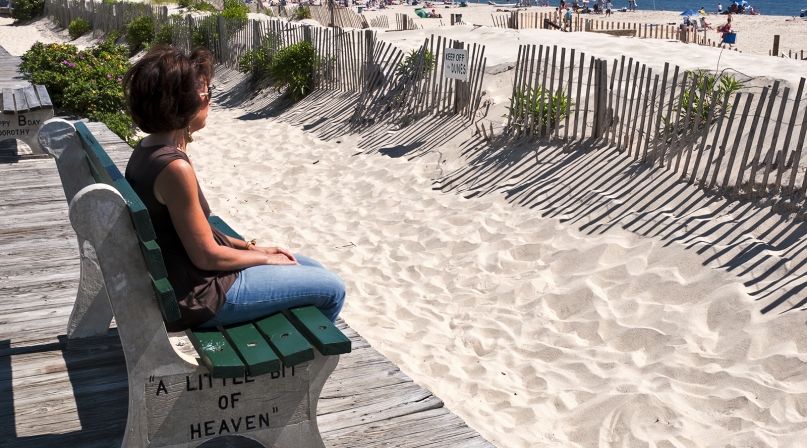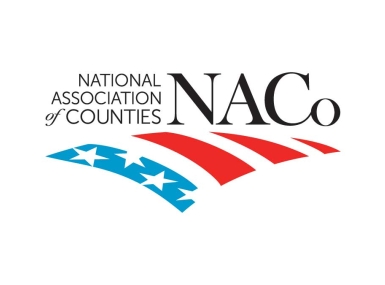‘Naturally Resilient Communities’ shows value of working with nature to reduce flood risk
Upcoming Events
Related News

The Nature Conservency and NACo's collaboration, "Naturally Resilient Communities," works to reduce flood risk
County News recently asked The Nature Conservancy (TNC) to describe its new collaboration with NACo, called “Naturally Resilient Communities.” NACo, along with the American Planning Association, the American Society of Civil Engineers, the Association of State Floodplain Managers and TNC are the key partners in the effort, which is funded by The Kresge Foundation and showcased through a new interactive website, www.NRCSolutions.org.
Following is an interview with Nate Woiwode, who is The Nature Conservancy lead for the project.
CN: In a nutshell, what is Naturally Resilient Communities?
NW: Naturally Resilient Communities is a partnership of county governments, professional engineers, community planners, floodplain managers and conservationists who work with communities to improve their quality of life and economies. The partnership is focused on helping communities use nature-based solutions that address multiple needs, with a focus on reducing impacts from floods and storms, improved water quality, enhanced recreational opportunities and better habitat for fish and wildlife.
CN: What’s the impetus behind Naturally Resilient Communities?
NW: I think it’s the culmination of several factors. First, floods are increasing in both frequency and impact. Ninety-six percent of the U.S. population lives in counties where federally declared, weather-related disasters have occurred. There have been 38 major floods in the U.S. since 2001, and, in the past 12 years, five major hurricanes have caused more than 2,200 deaths and some $230 billion in damages.
At the same time, our communities face many other challenges, like water quality, the need for economic growth, and—of course—limited financial resources. This is where the work of the Naturally Resilient Communities partnership comes into play. We’re here to help communities understand there are other options — nature-based options — that can, because of the multiple benefits they provide, pay dividends in the long run.
Lastly, I think it’s a realization that things have to change. The status quo for flood control is no longer meeting our needs. Average flood losses in the United States have risen steadily to nearly $10 billion annually, driving the National Flood Insurance Program some $24.6 billion into debt. We’ve also lost many of the invaluable benefits, like clean water, that nature provides.
CN: Can you provide an example of how nature-based solutions have protected residents and their property from floods?
NW: Communities are safer when rivers have more room during floods and floodwaters can disperse and slow down rather than rise, rage and threaten communities. Along our coasts, natural features like sand dunes and marshes or coral reefs and oyster reefs reduce wave heights, absorb storm surges and help stop erosion.
For example, at South Seaside Park, in Ocean County, N.J., a nor’easter in 1992 that caused significant flooding and erosion led the community to decide to restore dunes that had been removed years before to improve ocean views and beach access. The cost was minimal. They used “snow fencing” to help rebuild the dunes and then stabilized them by planting dune grasses. By the time Superstorm Sandy hit in 2012, the dunes were 25 feet high and 150 feet wide, and the dunes, rather than homes, businesses and infrastructure, took the brunt of the storm.
CN: How can nature-based solutions help protect a county’s environment?
NW: Natural features like wetlands, forests and marshes can improve water quality by filtering pollutants and sediment from water, which can reduce costs at water treatment facilities. Nature-based solutions also provide, create or improve wildlife habitat for fish, birds and other species. These same areas also enhance recreational opportunities.
CN: Are there ways nature-based solutions can improve a county’s quality of life?
NW: I touched on some of the ways these approaches can improve recreational opportunities and boost tourism, but studies have actually shown that the percentage of green space within a two-mile radius of a person’s home has been associated with the percentage of residents reporting good health. One study found that residents living in areas with more green space were more than three times as likely to be physically active, and approximately 40 percent less likely to be overweight or obese, compared to those living in areas with less green space.
CN: OK, can you 'show me the money'? Can nature-based solutions improve a community’s economy or present cost-saving options?
NW: Studies show that for every $1 spent on flood mitigation efforts, $5 is saved. But the real value of nature-based solutions comes into play when you factor in the wide range of other benefits they provide. There have actually been over 30 studies that have analyzed residential property values that support the idea that those located near natural or green spaces are more valuable and generate more tax revenues — with property values up to 20 percent higher.
Beach-based tourism in the United States is estimated to generate more than $300 billion in economic activity annually. And I can’t think of many postcards from beaches that feature views of seawalls or riprap. People visit beaches because of their natural beauty.
Another important economic value of nature-based solutions is wildlife habitat. In 2012, the total economic value of U.S. commercial and recreational fisheries was estimated at over $90 billion, with more than 1.7 million jobs related to the fisheries industry. And the vast majority of commercial and recreational fisheries rely on species that use floodplains and wetlands for some stage of their life cycle development.
All these things combined — reduced flood risk, improved community aesthetics, green spaces for parks and trails, outdoor recreational opportunities with better water quality and more fish and wildlife—not only attract more tourists, but businesses and professionals, too, which improves a community’s economy.
To learn more about Naturally Resilient Communities, visit www.NRCSolutions.org, or contact Jack Morgan, NACo program manager, jmorgan@naco.org, 202.942.4274.
Attachments
Related News

U.S. Department of Agriculture unveils $700 million for regenerative agriculture
On December 10, U.S. Secretary of Agriculture Brooke Rollins announced the launch of a $700 million pilot program to support regenerative agriculture practices across the country.

County Countdown – Dec. 1, 2025
Every other week, NACo's County Countdown reviews top federal policy advocacy items with an eye towards counties and the intergovernmental partnership.

Counties Celebrate Key Permitting Inclusions in SPEED Act
NACo issued the following statement in response to the passage of the Standardizing Permitting and Expediting Economic Development (SPEED) Act (H.R. 4776), which advanced out of the U.S. House Committee on Natural Resources on November 20.